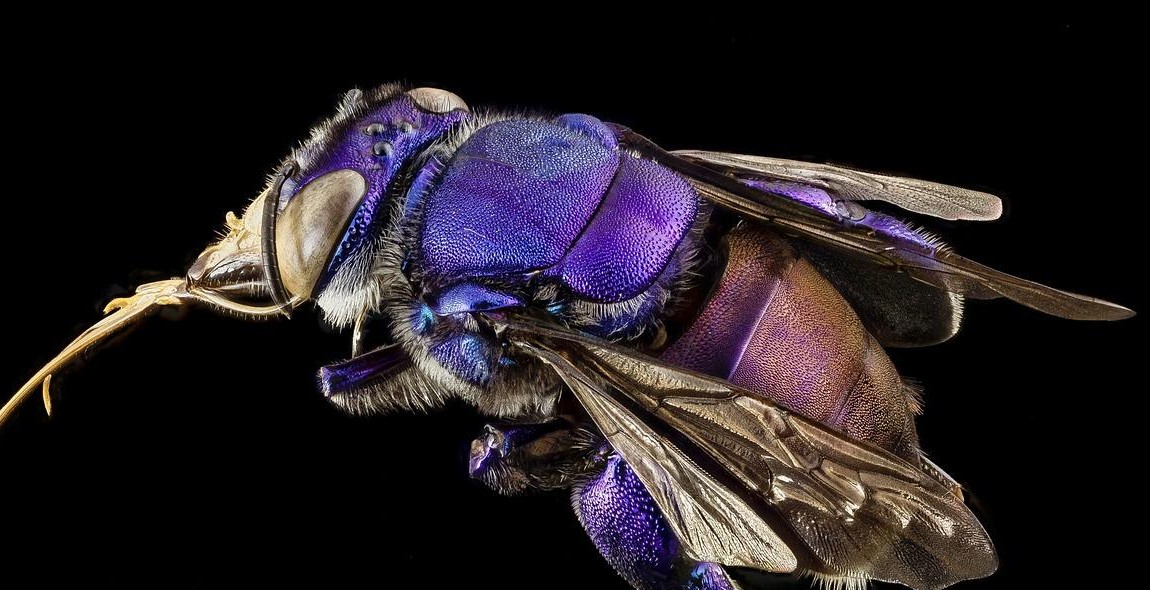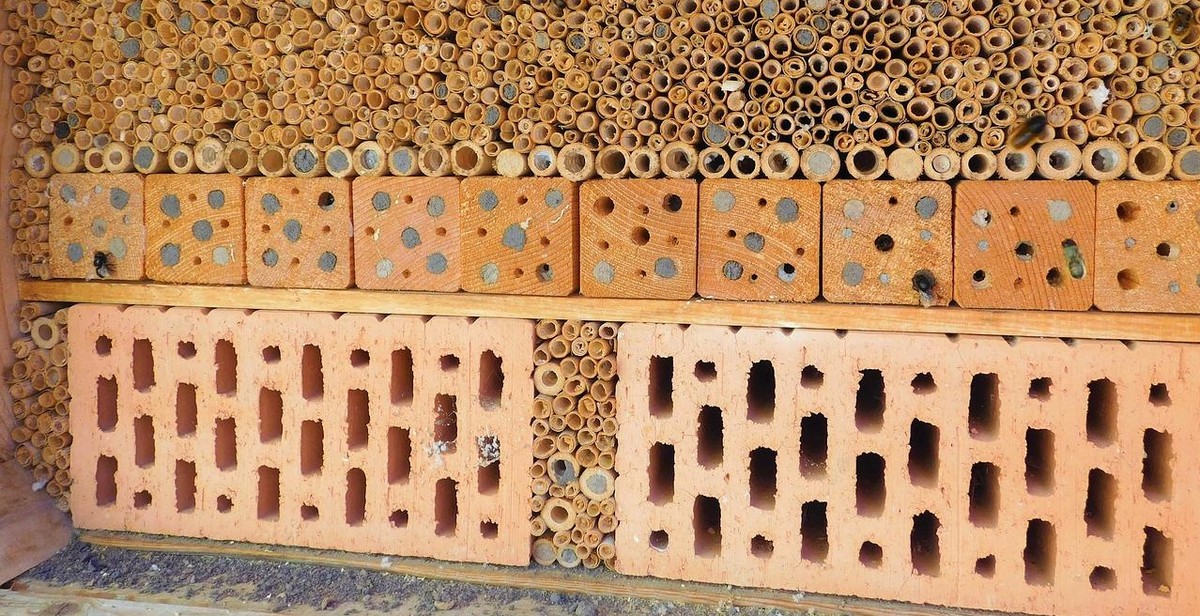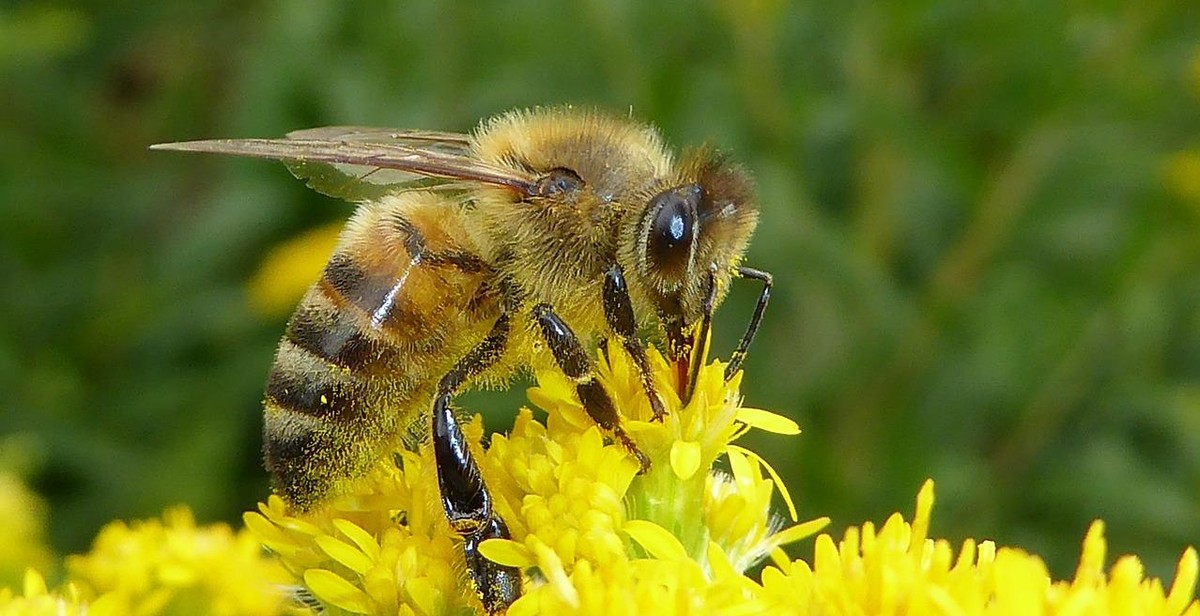How to Build a Bee Hotel: Providing Shelter for Native Bees in Your Garden
Bees are essential pollinators for plants in our ecosystem. Without bees, our gardens and crops would suffer. Unfortunately, many species of bees are in decline due to habitat loss and pesticide use. One way to help support native bee populations is to provide them with a safe and comfortable place to live. This is where a bee hotel comes in.
What is a Bee Hotel?
A bee hotel is a man-made structure designed to provide nesting sites for solitary bees. Solitary bees, unlike honeybees, do not live in hives or colonies. Instead, they build individual nests in hollow plant stems, holes in wood, or other small crevices.
Why Build a Bee Hotel?
By building a bee hotel, you can provide a safe and secure place for solitary bees to nest and lay their eggs. This can help support local bee populations and contribute to the overall health of your garden ecosystem.
In addition, many species of solitary bees are excellent pollinators and can be more efficient than honeybees at pollinating certain plants. By attracting a variety of bee species to your garden, you can help ensure that your plants receive the pollination they need to thrive.
Overall, building a bee hotel is a simple and effective way to support native bee populations and promote a healthy, thriving garden.

Understanding Native Bees
Native bees are a type of bee that is endemic to a particular region or ecosystem. Unlike honeybees, which were introduced to North America by European settlers, native bees have evolved alongside native plants and are essential pollinators for many crops and wildflowers.
Who are Native Bees?
There are over 4,000 species of native bees in North America, and they come in a wide variety of sizes, shapes, and colors. Some of the most common types of native bees include mason bees, leafcutter bees, sweat bees, and bumblebees.
Unlike honeybees, which live in large hives, most native bees are solitary and live in individual nests. These nests can be located in a variety of places, such as underground burrows, hollow twigs, or holes in wood.
Why are they important?
Native bees are essential pollinators for many plants, including crops such as blueberries, cherries, and almonds. They are also important pollinators for wildflowers and other flowering plants, which provide habitat and food for other wildlife.
Unlike honeybees, which are managed by beekeepers, native bees are not typically raised for commercial purposes. This means that they are not exposed to the same pesticides and other chemicals that can harm honeybees. However, native bees are still threatened by habitat loss, climate change, and other factors.
By providing habitat for native bees in your garden, you can help support these important pollinators and ensure that they continue to play a vital role in our ecosystems.
Choosing the Right Location
When building a bee hotel, it’s important to choose the right location to ensure the bees are comfortable and safe. Consider the following factors:
Sunlight and Temperature
Native bees are cold-blooded and need warmth from the sun to be active. Therefore, it’s important to place your bee hotel in a location that receives plenty of sunlight. South-facing locations are ideal because they receive the most sun. Additionally, the bee hotel should be placed in a location that is sheltered from strong winds and receives some shade during the hottest part of the day.
You should also consider the temperature of the location. Bees prefer warm temperatures between 70-90°F. If your location is too hot or too cold, the bees may not be able to survive.
Protection from Wind and Rain
Bees are sensitive to wind and rain, so it’s important to place your bee hotel in a location that is sheltered from these elements. A location that is protected by trees, shrubs, or a fence is ideal. Additionally, the bee hotel should be placed under an overhang or roof to protect it from rain.
It’s also important to make sure the bee hotel is secure and won’t be knocked down by strong winds.
| Factors to Consider | Ideal Location |
|---|---|
| Sunlight | South-facing location with some shade |
| Temperature | Warm location between 70-90°F |
| Protection from Wind and Rain | Sheltered location with overhang or roof |

Materials Needed
Wooden Blocks
The wooden blocks are the main component of the bee hotel. They should be untreated and have a minimum size of 4 x 4 inches. You can use scrap wood or purchase pre-cut blocks from a hardware store.
Natural Materials
You will need a variety of natural materials to fill the bee hotel. This includes bamboo stalks, reeds, pine cones, and dried leaves. Make sure the materials are clean and free from any chemicals or pesticides.
Tools
- Drill with various drill bits (3/32 inch to 5/16 inch)
- Saw
- Sandpaper
- Measuring tape
- Pencil or marker
- Clamps (optional)
Optional Extras
These items are not necessary but can enhance the bee hotel:
- Wire mesh or chicken wire to protect the bee hotel from predators
- Roofing material such as shingles or metal to protect the bee hotel from rain
- Decorative items such as paint or stencils to add personality to the bee hotel
Conclusion
By gathering these materials and tools, you will be well on your way to building a bee hotel that provides shelter for native bees in your garden.

How to Build a Bee Hotel: Providing Shelter for Native Bees in Your Garden
Step 1: Cutting the Wood
The first step in building your own bee hotel is to cut the wood to size. You will need a saw, measuring tape, and a pencil. Cut the wood into pieces that are 6 inches long and 4 inches wide. You will need at least six of these pieces to create the frame of the bee hotel.
Step 2: Preparing the Natural Materials
Next, you will need to gather natural materials to fill the bee hotel. These materials should include bamboo, reeds, and other hollow stems. Cut these materials into pieces that are 6 inches long and remove any leaves or debris. You can also include pinecones, dried leaves, and twigs for additional texture.
Materials:
- Bamboo
- Reeds
- Hollow stems
- Pinecones
- Dried leaves
- Twigs
Step 3: Assembling the Bee Hotel
Now that you have cut the wood and prepared the natural materials, it’s time to assemble the bee hotel. Start by laying out the six pieces of wood to create a rectangular frame. Use wood glue to attach the pieces together at the corners. Next, fill the frame with the natural materials, packing them tightly to prevent any gaps. Finally, attach a hanger to the back of the bee hotel so that you can hang it in your garden.
| Tools: | Saw | Measuring tape | Pencil | Wood glue |
|---|---|---|---|---|
| Skills: | Measuring and cutting wood | Preparing natural materials | Assembling a wooden frame |
Building a bee hotel is a fun and rewarding project that can provide shelter for native bees in your garden. Follow these simple steps to create your own bee hotel and help support the important work of these pollinators.
Maintaining Your Bee Hotel
Building a bee hotel is only the first step in providing shelter for native bees in your garden. It is important to maintain the bee hotel to ensure that it remains a safe and comfortable place for bees to nest. Here are some tips for maintaining your bee hotel:
Cleaning
Regular cleaning of your bee hotel is crucial to prevent the buildup of harmful bacteria and parasites. It is recommended to clean your bee hotel at least once a year, preferably in the fall after the bees have emerged.
To clean your bee hotel, remove all the nesting materials and discard any that are damaged or moldy. Use a brush to remove any debris or cobwebs from the nesting tubes or holes. You can also wash the nesting tubes with a mild soap and water solution or a 10% bleach solution to sanitize them. Allow the nesting tubes to dry completely before replacing the nesting materials.
Replacing Materials
Over time, the nesting materials in your bee hotel will become worn and need to be replaced. It is recommended to replace the nesting materials every 2-3 years to ensure that the bee hotel remains a safe and comfortable place for bees to nest.
To replace the nesting materials, simply remove the old materials and replace them with fresh ones. You can use a variety of materials, such as bamboo or reed stems, cardboard tubes, or drilled wood blocks.
Monitoring Bee Activity
Regular monitoring of your bee hotel can help you determine if it is being used by bees and if any maintenance is required. Check the nesting tubes periodically to see if they are being filled with nesting materials or if you can see any bee activity.
If you notice that the bee hotel is not being used, try relocating it to a different area of your garden or adding different types of nesting materials. If you see signs of pests or parasites, such as mites or beetles, take action to remove them and sanitize the nesting tubes.
Maintaining your bee hotel is essential to ensure that it remains a safe and inviting place for native bees to nest. By following these simple tips, you can help provide shelter for these important pollinators and contribute to a healthy ecosystem in your garden.

Conclusion
Building a bee hotel is a simple and effective way to provide shelter for native bees in your garden. Not only does it benefit the bees, but it also has a positive impact on the environment and your garden as a whole.
Benefits of Building a Bee Hotel
Firstly, bee hotels help to support the declining bee population. By providing a safe and secure place for bees to nest, you are helping to increase their chances of survival. This is especially important for native bees, which are often overlooked in conservation efforts.
Secondly, bee hotels can improve pollination in your garden. Native bees are excellent pollinators and can increase the yield and quality of your crops and flowers. By providing them with a home, you are encouraging them to stick around and do their important work.
Thirdly, bee hotels are a great educational tool for children and adults alike. They provide an opportunity to learn about the importance of bees in our ecosystem and how we can help to protect them.
Final Thoughts
Building a bee hotel is a fun and rewarding project that can have a positive impact on the environment and your garden. By following these simple steps, you can create a safe and secure home for native bees and contribute to their conservation.
Remember to place your bee hotel in a sunny and sheltered spot, and to maintain it regularly to ensure it remains a safe and healthy environment for your buzzing friends.
So, what are you waiting for? Grab your materials and start building your very own bee hotel today!
